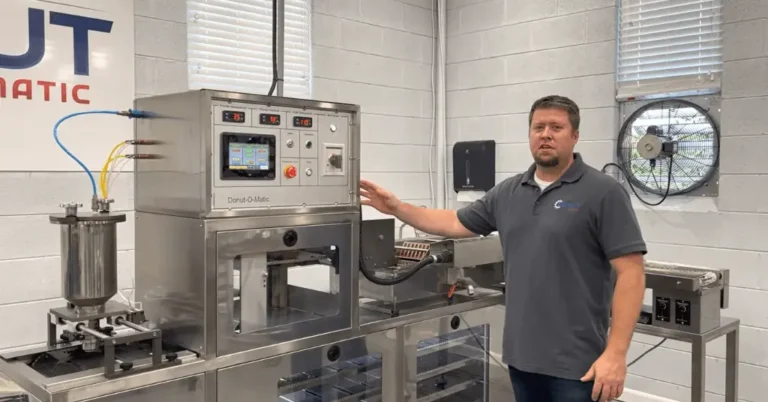Bottleneck Calculator For PC To Use In 2024
In today’s world, where everything is digital, a lot of people who really like technology want to create the best computer system. They do this either to have an amazing experience when playing games or to make sure that the software they use works really well. It’s like they’re trying to build the perfect machine for their needs. One common challenge in this journey is dealing with the notorious ‘bottleneck.’
A bottleneck occurs when one part of your computer system is holding back the performance of other components. Finding a trusted bottleneck calculator and fps calculator is important to make your computer work better, but only using online tools that tell you about bottlenecks might not always be completely accurate.
This guide will make the idea of bottleneck PC easier to understand. It’s here to help you figure out what bottlenecks are, how to stop them from happening, and how to fix them if they do occur. We’ll discuss potential bottleneck culprits and evaluate the reliability of bottleneck calculators. Additionally, we’ll provide a list of recommended calculators and offer insights on using them effectively.
What Is a PC Bottleneck?
A PC bottleneck is a limitation in a computer system where one component’s performance falls behind, which affects the overall efficiency. It’s like a traffic jam: if one lane slows down, the entire highway is affected. Similarly, if one part lags, the whole system’s speed suffers. When you have bottlenecks in your computer, it can make your computer feel slow, cause problems like dropped frames when playing games, or even make your system crash.
Potential Bottleneck Culprits
Several components can become bottlenecks, including the CPU, RAM, storage, and GPU. If any of these components are outdated or overloaded, they can drag down the entire system.
- CPU: Handles most primary functions; an outdated or overloaded CPU can slow down the system.
- RAM: Acts as short-term memory; insufficient or slow RAM can lead to system lags.
- Storage (HDD/SSD): Slow storage can increase load times and reduce responsiveness.
- GPU: Crucial for tasks like gaming; a lagging GPU can result in dropped frames or reduced visual quality.
Are PC Bottleneck Calculators Reliable?
While PC bottleneck calculators offer quick estimates of potential imbalances, their reliability is limited. They use generalized benchmarks and may not account for specific system nuances or tasks. Different calculators use varied algorithms, leading to inconsistent results.
It’s advisable to combine these tools with hands-on system monitoring and real-world testing for a more accurate assessment. In essence, bottleneck calculators provide rough estimates of system balance but should be viewed as starting points, not definitive identifiers.
Also read: Unveiling The Realme C17 Experience
Best 3 Bottleneck Calculators for PC
There are many PC bottleneck calculators available, but their accuracy can vary. Here are three calculators known for their reliability:
1. PC Builds Bottleneck Calculator
The PC Builds Bottleneck Calculator is a comprehensive tool for computer enthusiasts and builders. Its intuitive interface allows you to compare the performance of the CPU, GPU, and display resolution, identifying any potential bottlenecks. One notable feature is its ability to provide percentage estimates for both CPU and GPU bottlenecks. The feasible interface includes dropdown menus for selecting hardware components, making the process efficient.
While the calculator has gained a reputation for its up-to-date database that accommodates the latest hardware innovations, there are some limitations. Specific details such as RAM size and frequency selection are omitted, and there is a lack of a PSU (Power Supply Unit) wattage selector. Nonetheless, the PC Builds Bottleneck Calculator remains a valuable asset for those seeking a balanced and efficient computer system.
2. CPU Agent Bottleneck Calculator
The CPU Agent Bottleneck Calculator provides a comprehensive analysis by examining potential bottlenecks in the CPU, GPU, and RAM. You can customize the analysis with options to enter clock speeds and overclocking details. One of its standout features is the visual graph, which provides a clear representation of component balancing.
The calculator goes beyond simple bottleneck identification which offers insights into CPU utilization across processes and threads. While the CPU Agent Bottleneck Calculator provides in-depth analysis, it requires manual entry of some details. However, its visualizations and tracking capabilities make it a valuable tool for identifying and addressing CPU-bound performance issues.
3. Build Redux
Build Redux is a calculator that focuses on CPU bottlenecks by comparing your processor to recommended chips for your GPU. It stands out for its dedication to simplifying the PC building experience. The platform offers a curated selection of components, ensuring high performance and durability in each build.
You can follow the whole process, from picking out the parts to putting them together and making sure everything is top-notch. Build Redux, while catering to a streamlined approach, may not appeal to hardcore enthusiasts seeking niche components. However, it serves as an ideal choice for those who prioritize a hassle-free and trustworthy building process.
How To Use Bottleneck Calculators?
To use a bottleneck calculator, follow the given steps.
1. Choose a Calculator
Select one of the recommended calculators mentioned above. When using bottleneck calculators, it’s essential to choose a tool that aligns with your specific needs.
2. Collect PC Specifications
Gather details on your CPU, GPU, RAM, and storage. Collecting complete specifications of your CPU, GPU, RAM, and storage is crucial for accurate evaluations.
3. Enter Information
Input your PC specs into the calculator. Enter all the details correctly into the calculator and look at the results. Pay attention to the bottleneck percentage and the suggestions for each part.
4. Analyze Results
Review the bottleneck percentage and component recommendations. A lower percentage is better, indicating minimal bottlenecking.
5. Consider Upgrades
If a severe bottleneck is found, consider upgrading the weaker component.
After entering your system’s details and clicking the “Calculate” or “Proceed to Calculate” button. The bottleneck calculator will analyze your components and present results in the form of a percentage indicating potential bottlenecking. Color-coded bar charts may also visualize this information.
A lower percentage, closer to 0%, suggests minimal bottlenecking, while higher percentages indicate that one component might be limiting the performance of another. These calculators are not always 100% accurate and should serve as a helpful guide rather than an absolute measure. To ensure reliability, it’s advisable to cross-check and verify assessments using multiple calculators, being cautious of any contradictory results.
If a significant bottleneck is identified, it’s recommended to consider upgrading the weakest component to improve overall performance. For instance, if the GPU is causing a bottleneck at 90%, upgrading the GPU can resolve the issue. After any upgrades, rerun the calculator to confirm that the bottleneck has been effectively addressed.
FAQs
Final Verdict
PC bottleneck calculators are valuable for identifying potential performance issues, but their estimates should be approached with caution. Use them in conjunction with real-world testing and component benchmarks for a more accurate evaluation. Focus on calculators that provide comprehensive hardware analysis rather than isolating the CPU or GPU.
Even though calculators can help, testing your system in the real world gives you a better overall idea of how well it performs. If you’re into gaming, make sure to adjust your graphics settings for the best experience. Remember, bottleneck calculators are guides, not definitive measures. Cross-check results with multiple calculators and validate through real-world testing.
I’m Ryle Pham owner of geekshook.com. With a passion for the latest tech advancements, i provides insightful articles and comprehensive reviews on topics like mobile devices. Their engaging content and ability to simplify complex concepts have attracted a loyal readership. Through geekshook.com, I aims to bridge the gap between technology and everyday life, empowering readers to navigate the ever-changing digital world.







